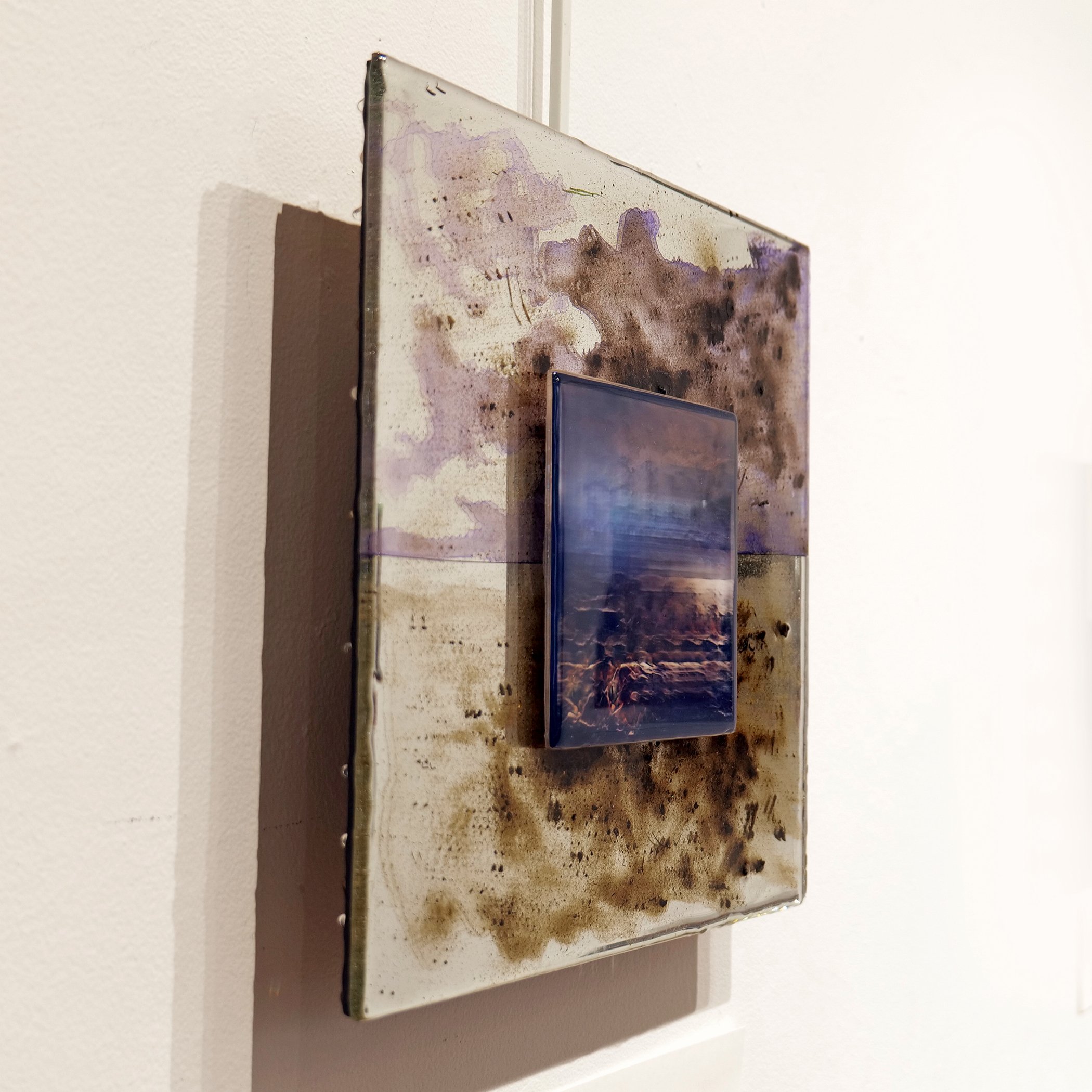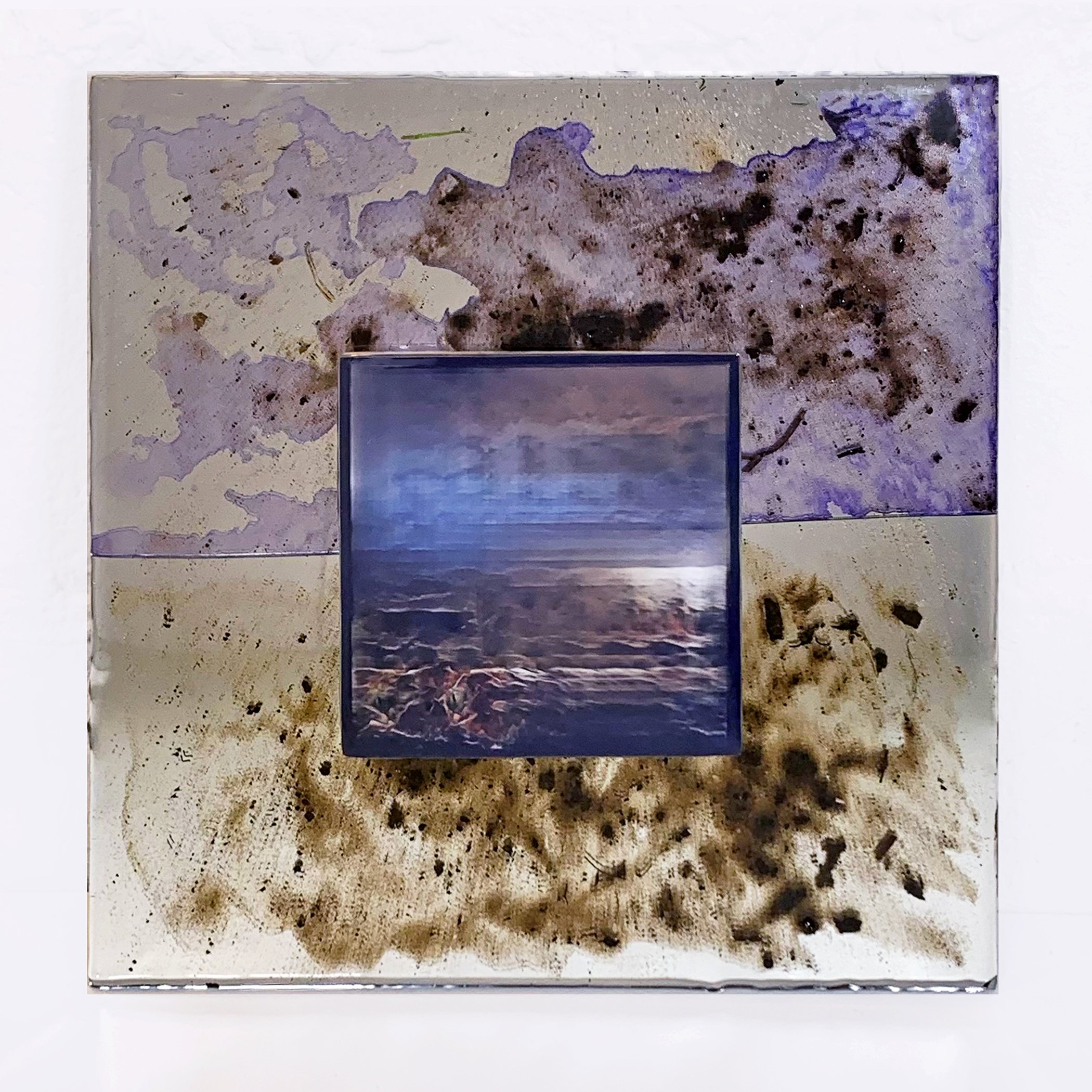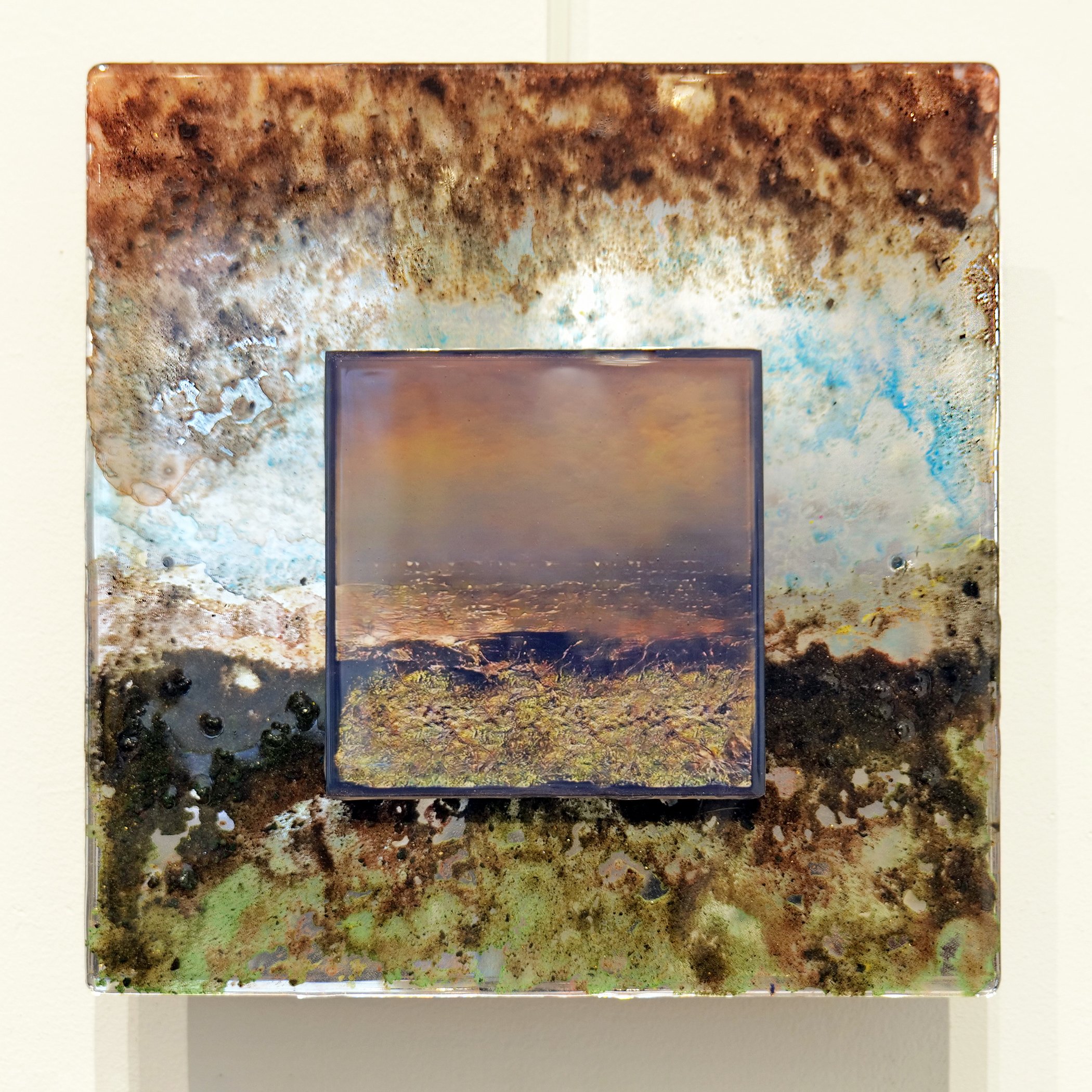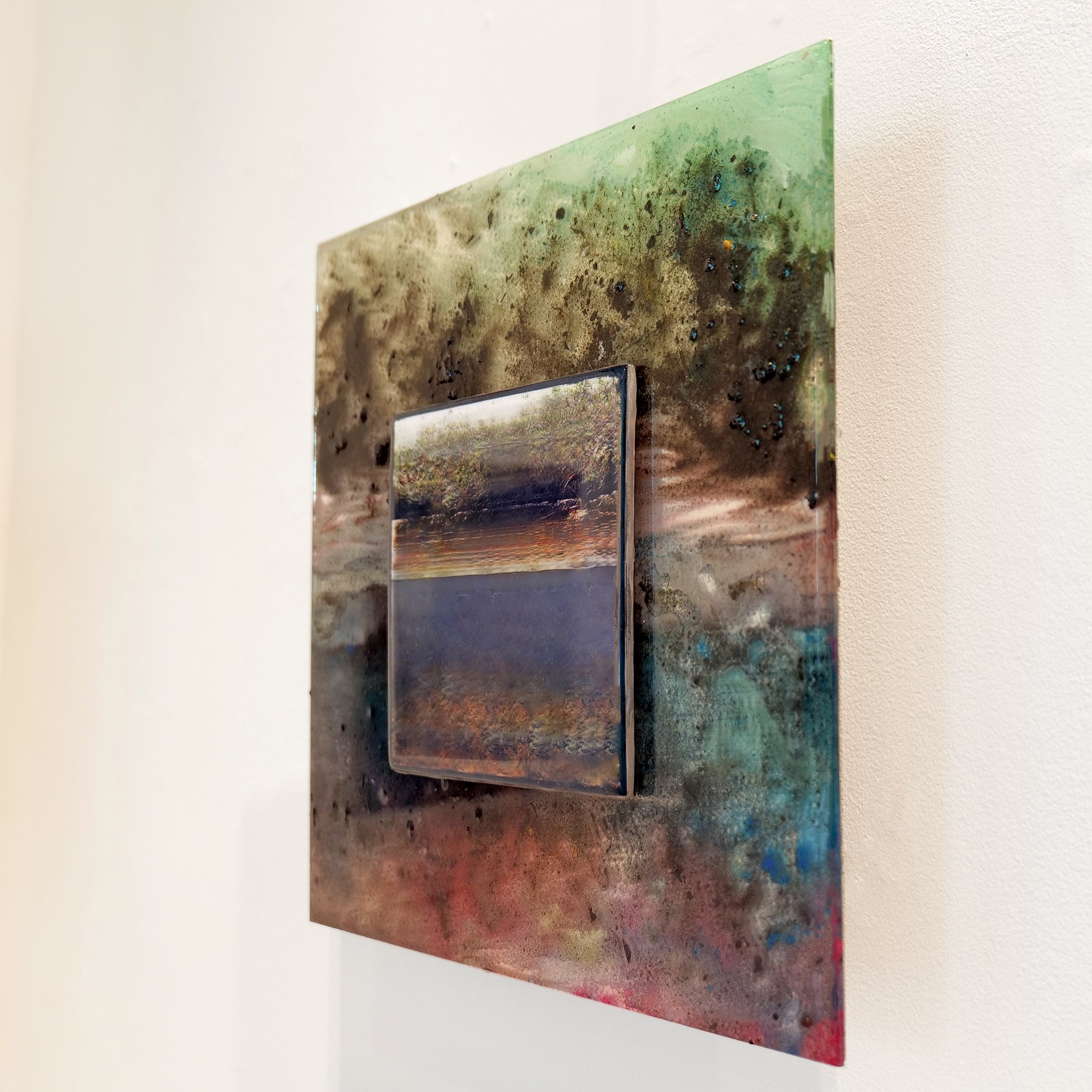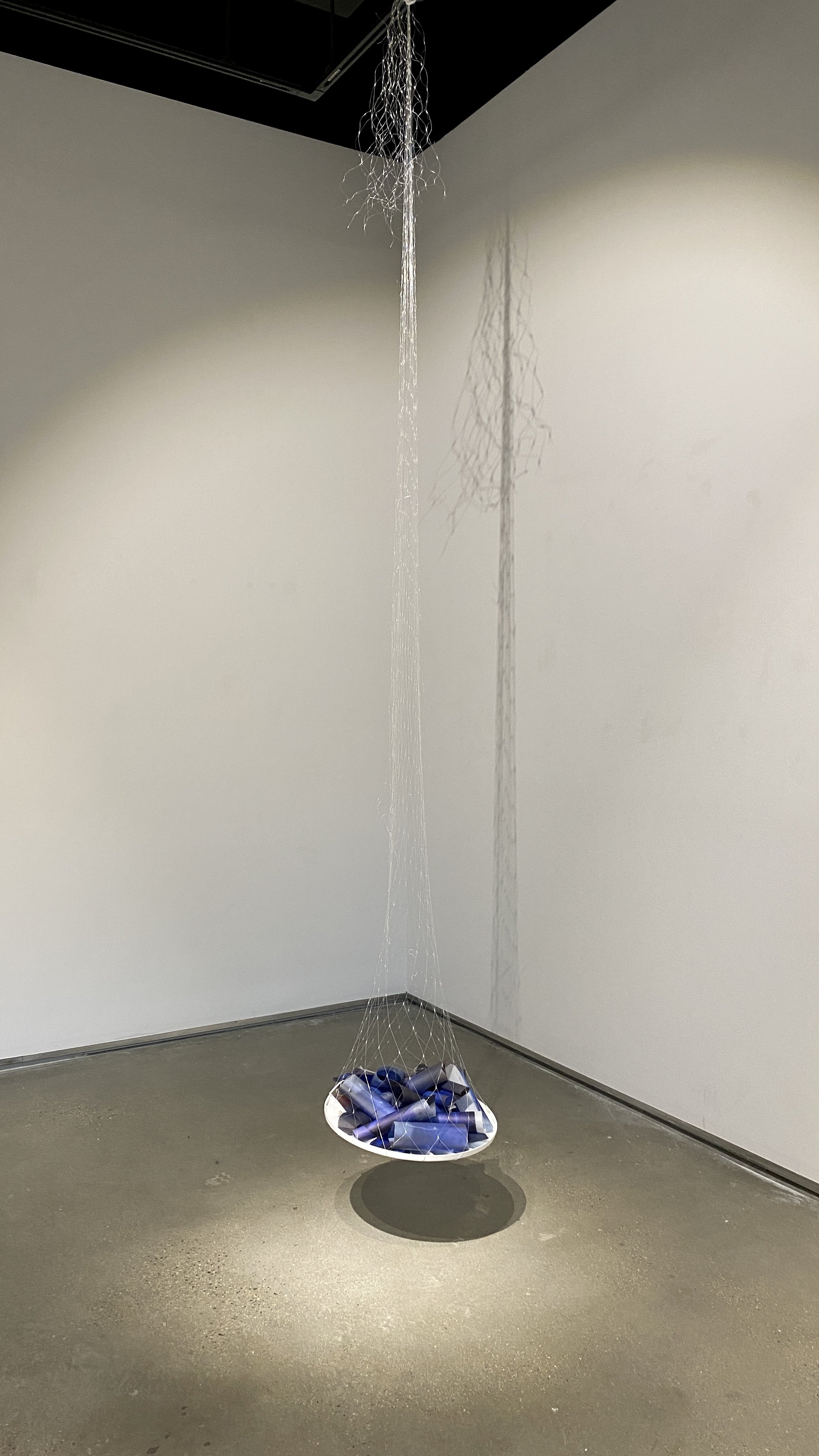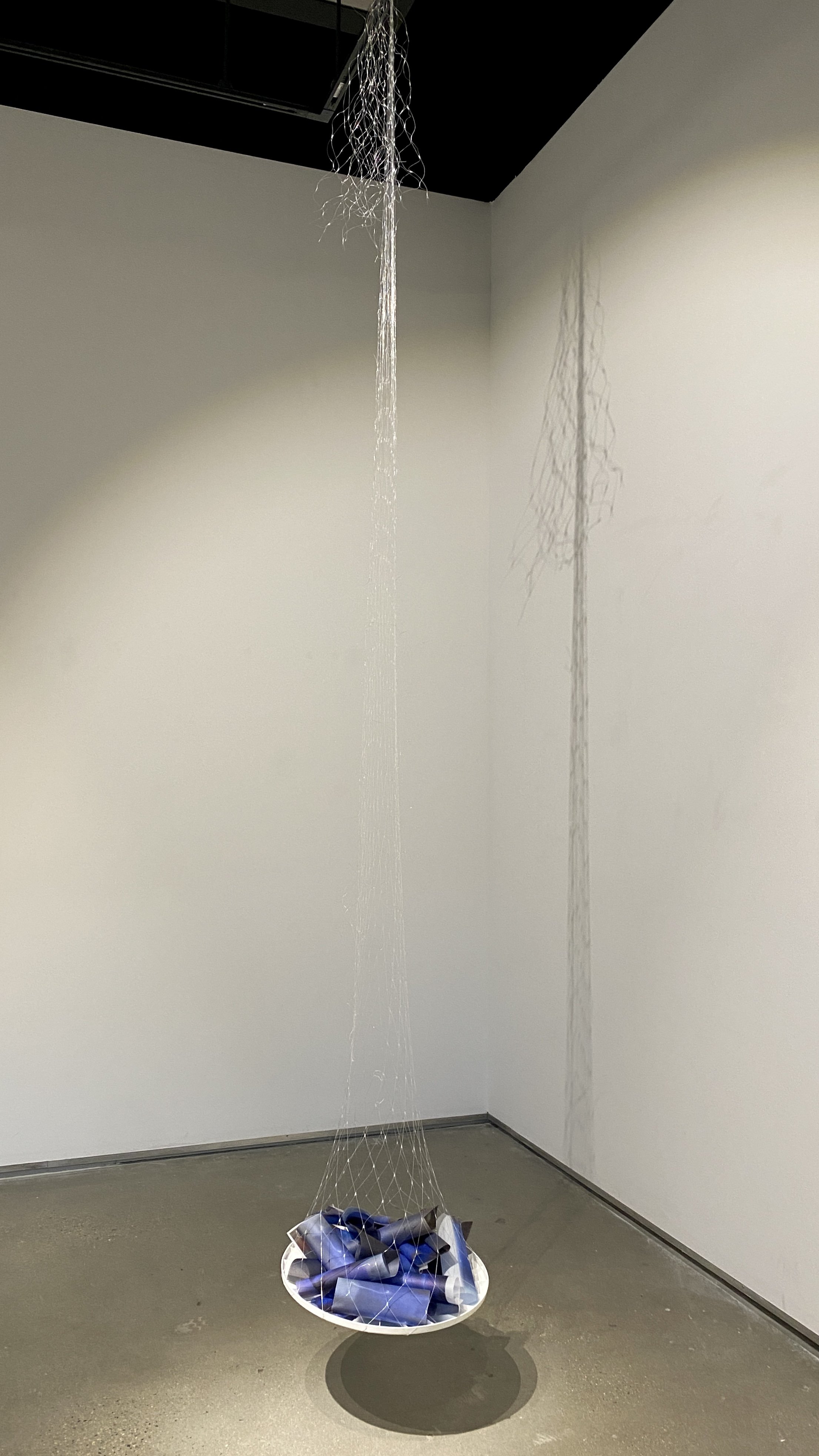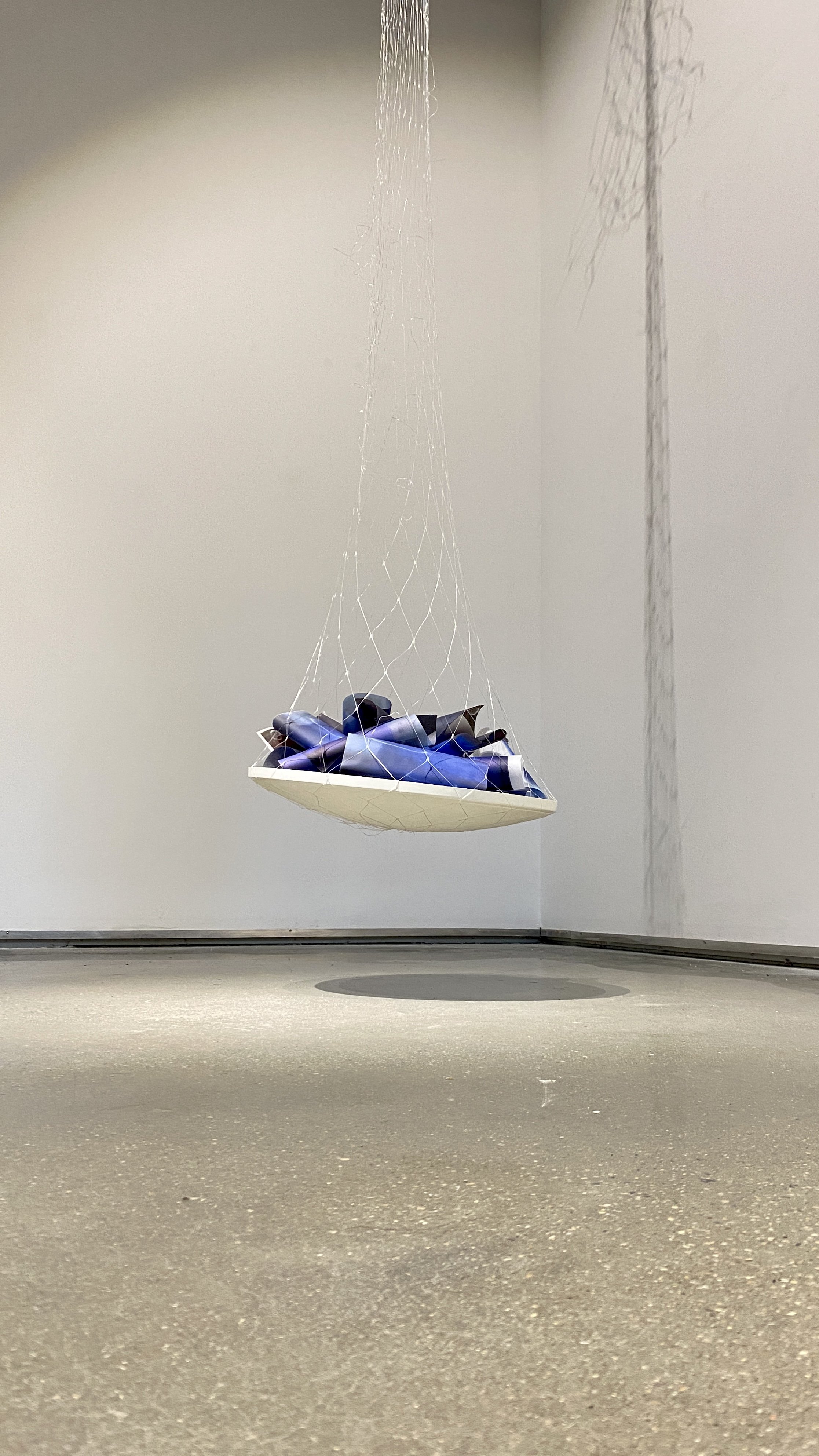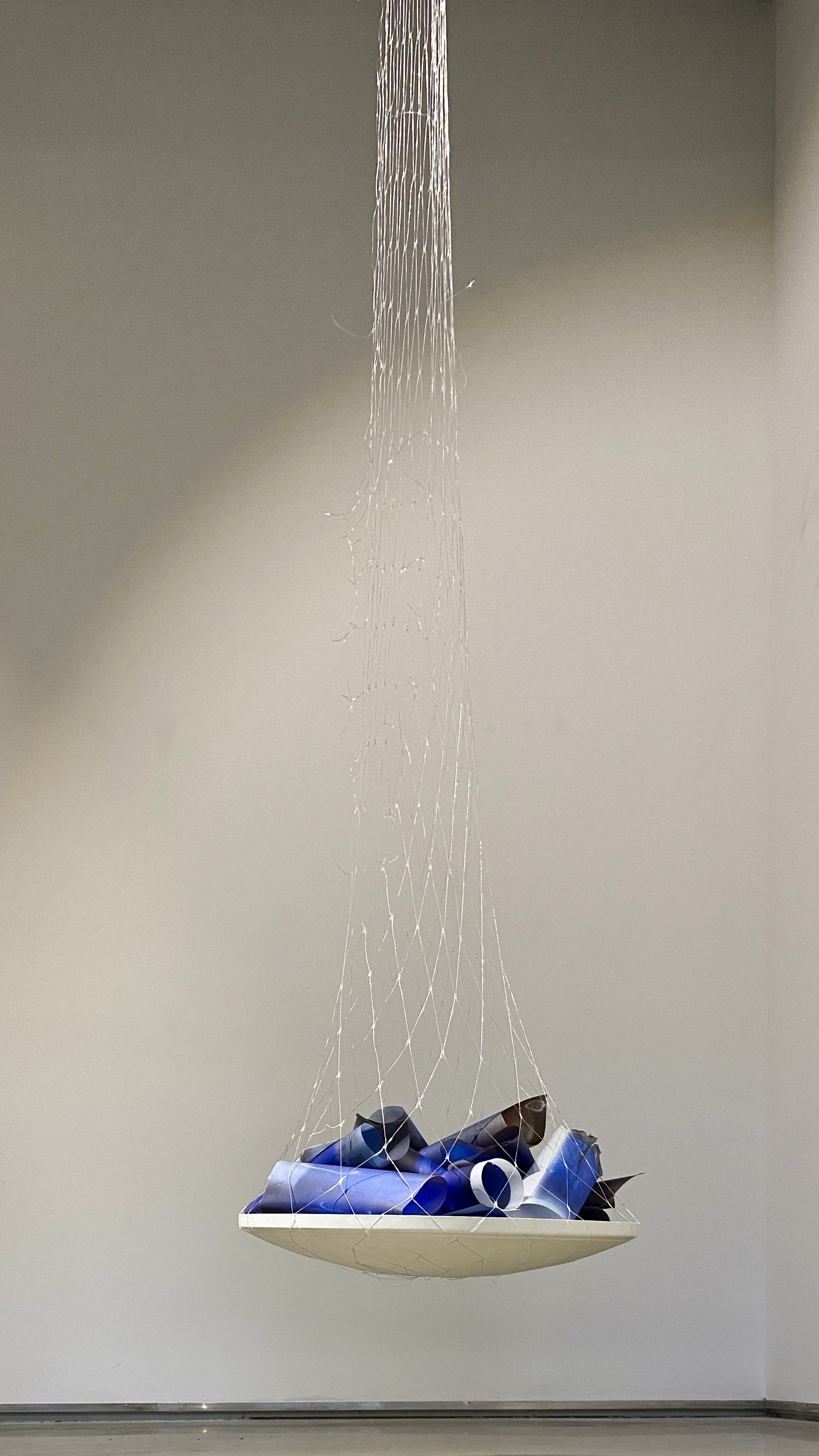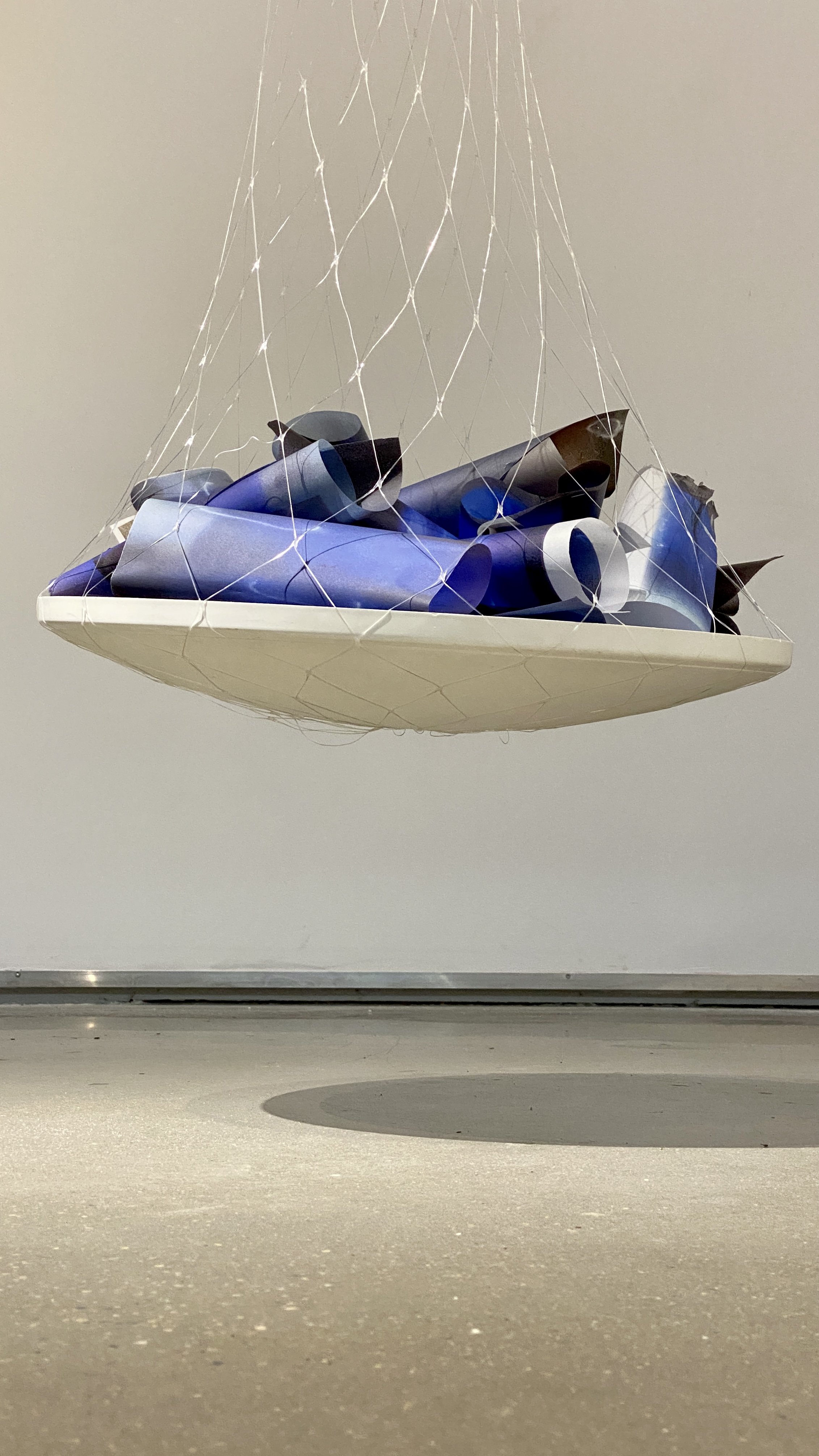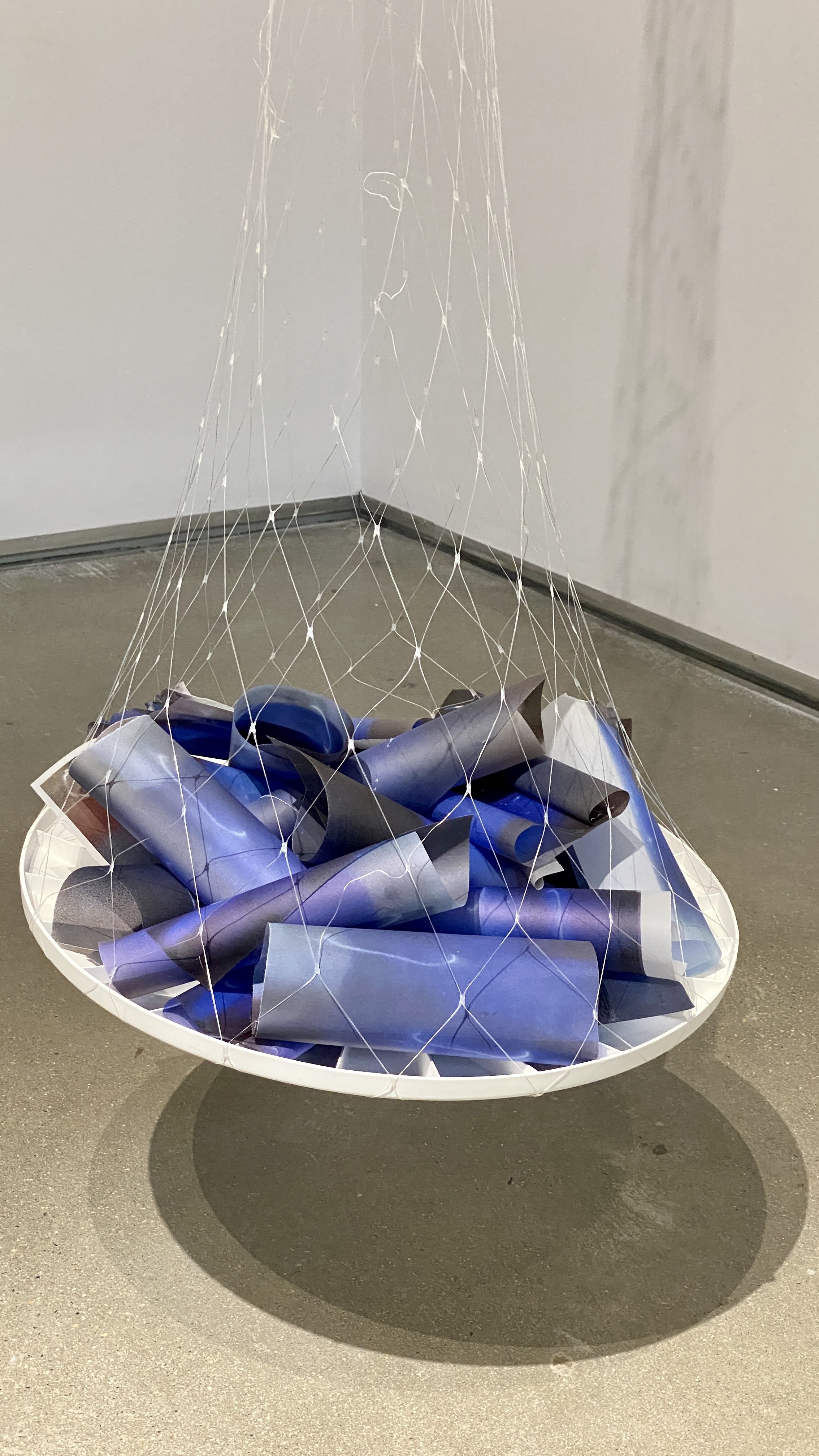Approaching Event Horizons
Two exhibitions hosted by Mason Exhibitions
Approaching Event Horizons represented two evolving exhibitions hosted by George Mason University (GMU). The first was showcased at Mason Exhibitions Arlington from August 24 to October 1, 2022. The second was hosted at the Buchanan Hall Atrium Gallery at the GMU Fairfax Campus from February 13 to April 21, 2023. Both exhibitions were curated by María Alejandra Sáenz and included the work of Atlantika Collective artists Gabriela Bulisova, Todd R. Forsgren, Billy Friebele, Mark Isaac, Katie Kehoe, Yam Chew Oh, and Sue Wrbican. A catalog from the exhibition, created by Mason Exhibitions, is available below.
Curator’s Statement:
A Field Guide to Pelagic Plastic Bags, by Todd Forsgren, (2018-2022).
An event horizon alludes to a boundary in space around a black hole beyond which nothing, including light, can escape. Acknowledging the current climate crisis of our planet, Approaching Event Horizons: Projects on Climate Change by Atlantika Collective understands that we are headed towards a point of no return, but resists the idea that a cataclysm is inevitable.
Through sculptural explorations, photography, video, and sound, the seven artists in this exhibition address the growing consumerism culture and raise awareness about the current consequences of the environmental crisis—polluted and contaminated waters, intense variations in temperature, increasing deforestation, and wildfires.
Their works not only illustrate the environmental emergency but extend an invitation to relearn our ways of relating with nature and inspire actions to help mitigate the critical consequences of climate change and be in communion with the environment. Actions such as planting and caring for native trees and reducing the consumption of single-use plastics and shipment materials, are some proactive steps we can take.
As art historian T.J. Demos writes, “I’m convinced that art, given its long histories of experimentation, imaginative invention, and radical thinking, can play a central transformative role here. In its most ambitious and far-ranging sense, art holds the promise of initiating exactly these kinds of creative perceptual and philosophical shifts, offering new ways of comprehending ourselves and our relation to the world differently than the destructive traditions of colonizing nature.” [T. J. Demos, Decolonizing Nature: Contemporary Art and the Politics of Ecology (Berlin: Sternberg Press, 2016), 19]
Approaching Event Horizons is a call to action to prevent us from approaching an event horizon. This exhibition encourages all to take steps forward to establish an equitable relationship with nature and calls for building new horizons in search of a better ecological future for the Earth.
— María Alejandra Sáenz
About the Exhibition:
Detail from Party Popper / Plague Tower by Sue Wrbican, 2022.
Sue Wrbican questioned today’s surreal era and the voracious cycle of consumer culture in Before the Ghost, and in Party Popper / Plague Tower she conveyed her response to political deal-makings regarding the climate crisis during the Covid-19 pandemic. Todd R. Forsgren’s photographic series A Field Guide to Pelagic Plastic Bags, in which he captured images of plastic bags floating in the water, warns about the negative impact of plastic pollution in the oceans. Gabriela Bulisova and Mark Isaac presented The Second Fire and A Tree for the Forest, two projects that trace the effects of global warming and the climate crisis in different regions of the world—the Baikal region located in Eastern Siberia, Cyprus, and the Czech Republic.
In A convenient matter, a 13-foot sculpture, Yam Chew Oh instigated a conversation about the rapid consumption of plastic bottles in contrast to their slow degradation and long-term permanence on Earth. Continuing his research on rivers, Billy Friebele used digital tools to explore the submerged life of these bodies of water. He also captured scenes above and below the water in Machines Learn from the River. Finally, Katie Kehoe presented Superimpositions: Wildfires In My Landscape, a series of animated photographs that reveal the ecological emergency of wildfires. Kehoe also reflected on the absence of trees in her work 200 Trees, part 1, where she documents planting over 100 native trees in rural areas of Nova Scotia, Canada.
Accompanying these works were videos presented by Gabriela Bulisova and Mark Isaac (Embers and Effluents), Billy Friebele (Inversion/Submersion), and Sue Wrbican (Ocean Extrusion). The videos were visible on a panoramic outdoor screen at the gallery that was visible to passers-by.
A floating waterproof camera system gathers video in the Anacostia River, a river threatened by pollution and high levels of bacteria. Inversion/Submersion 1.2 (2022) reveals an interconnected ecosystem above and below the water surface. Friebele trains the AI on a set of images collected by the camera. He then uses the processing power of the AI, to see the river in an expanded way, as if through the senses of another being. Friebele uses digital tools to explore the space between technology, nature, and humans in an effort to elicit empathy for the larger web of life that depends on the river.
Machines Learn from the River 1.1, 1.2 & 1.3 (2022) by Billy Friebele
Digital tools like artificial Intelligence are currently being used by scientists to predict water quality patterns and analyze immense data sets. This is possible because the computational power of AI exceeds human capabilities. The creatures living on the river also possess perceptual competencies that extend far beyond the human range of acuity.
While digital devices like AI appear to exist in disembodied spaces made up of code, circuitry, and electricity, the hardware is entirely reliant upon materials sourced from beneath the earth’s surface, like gold, copper, and cobalt. In a sense, humans are collaborating with the unique properties of these metals found in the earth to access other dimensions of processing power, sensation, and understanding. Our tools, just like our bodies, are inextricable from the natural earthly habitats in which they are situated.
In Superimpositions: Wildfires In My Landscape (2021-22), Katie Kehoe superimposes found images that document recent wildfires onto photographs she has taken of places she has close connections with—which have not been, to this point, directly impacted by wildfires. The overlays unfold over a prolonged time to convey premonitory images.
Superimposition: Wildfires in My Landscape, Eastern Montana Fire, 2021, by Katie Kehoe.
Superimposition: Wildfires in My Landscape, Birdseye Fire, 2021, by Katie Kehoe.
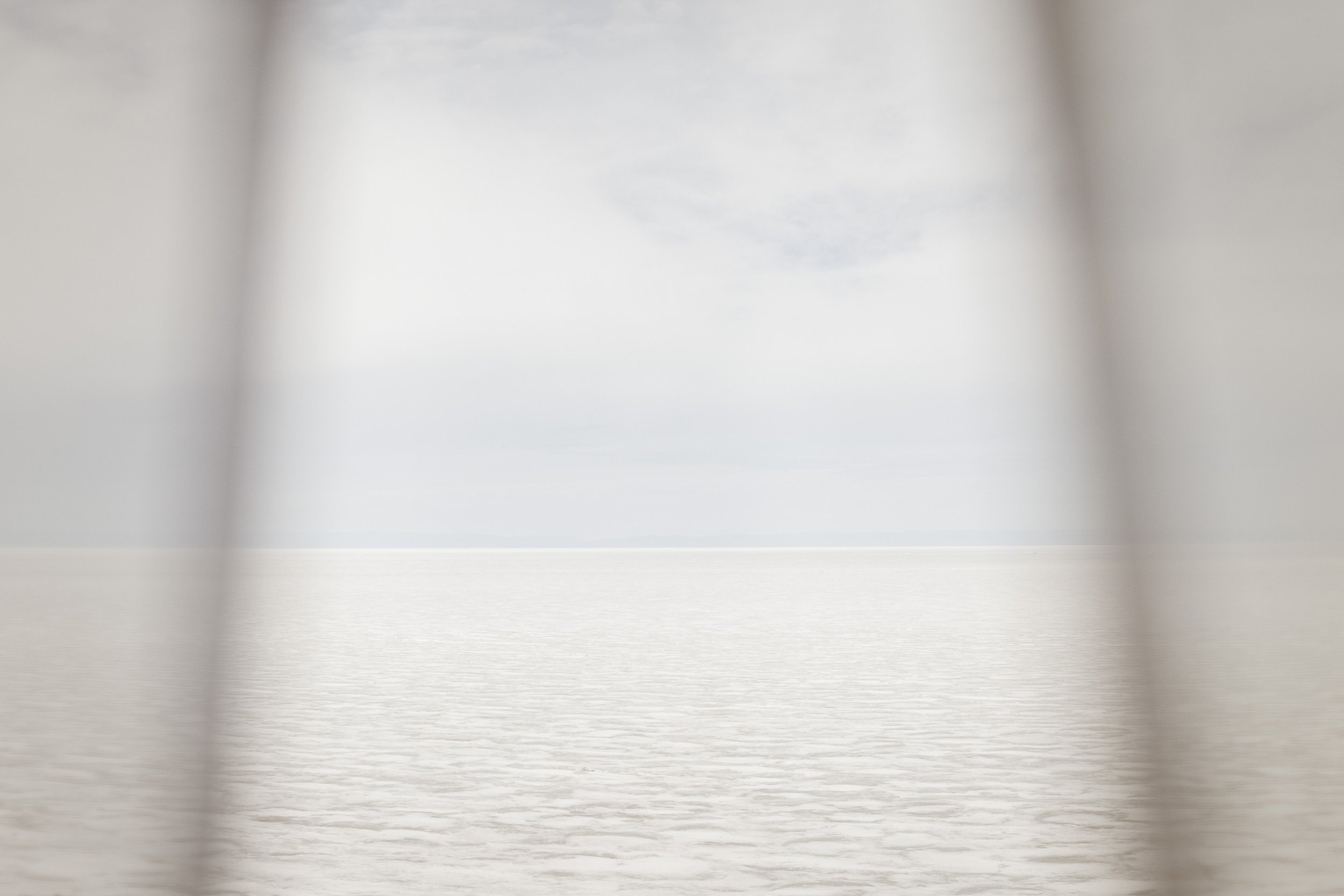
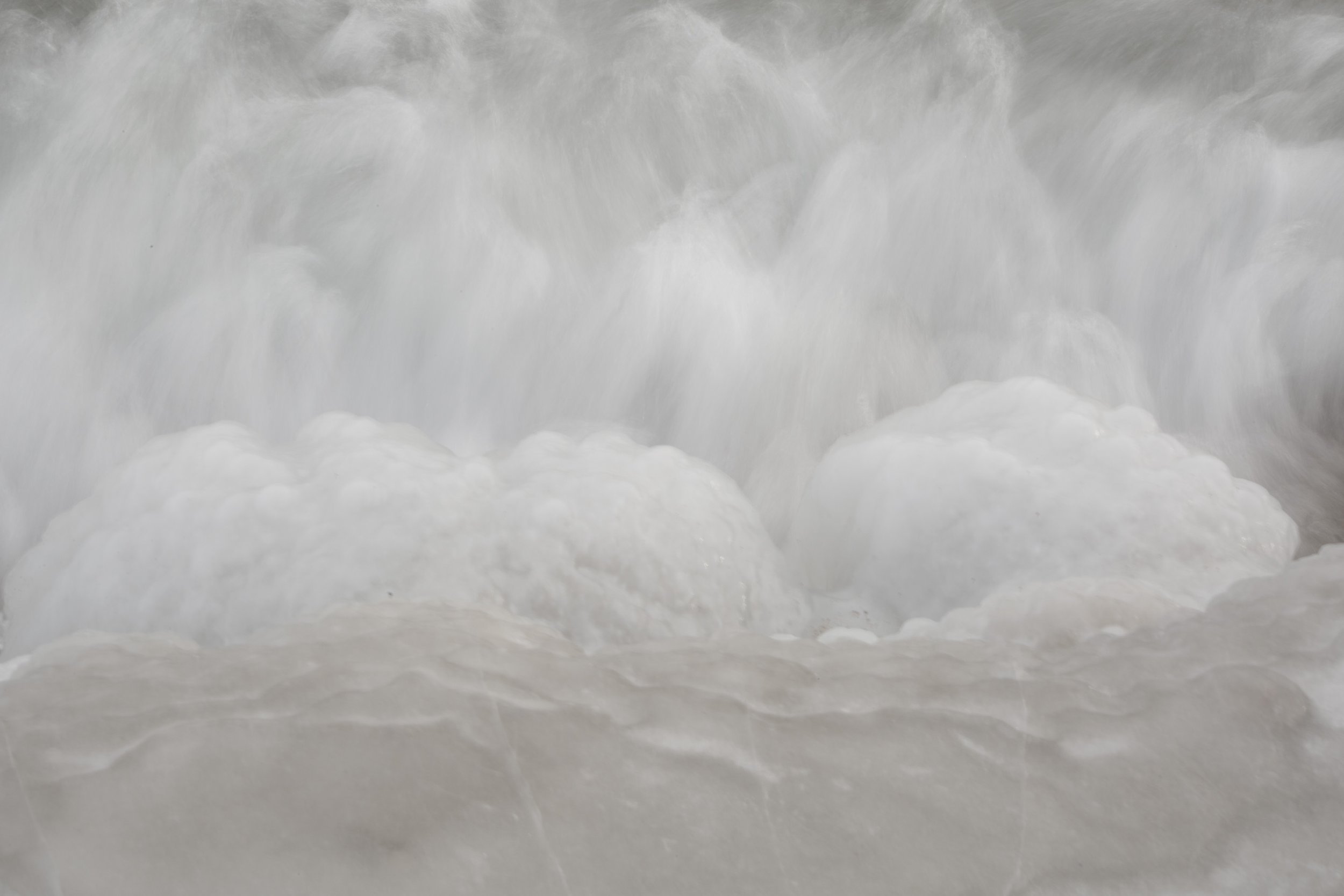

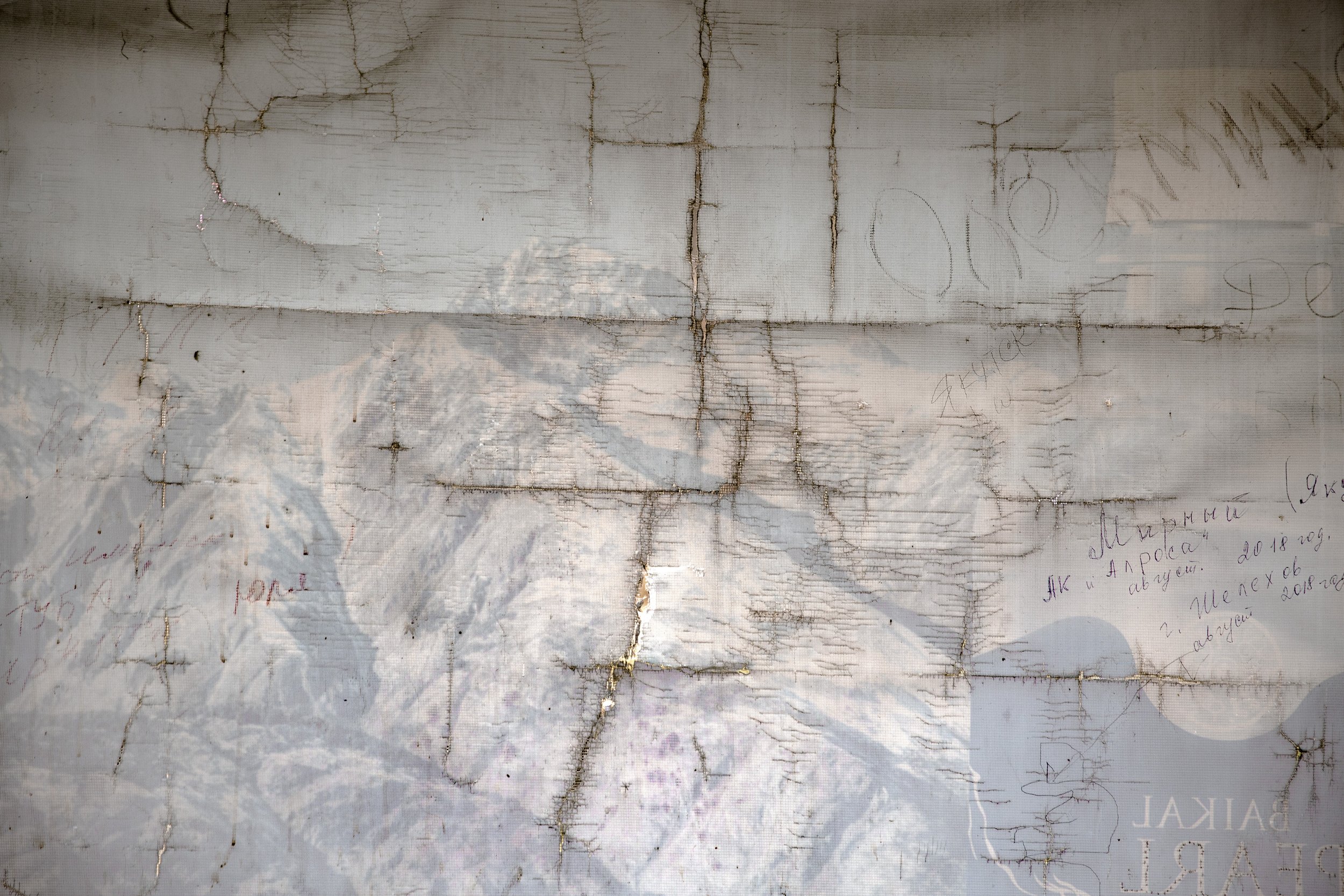
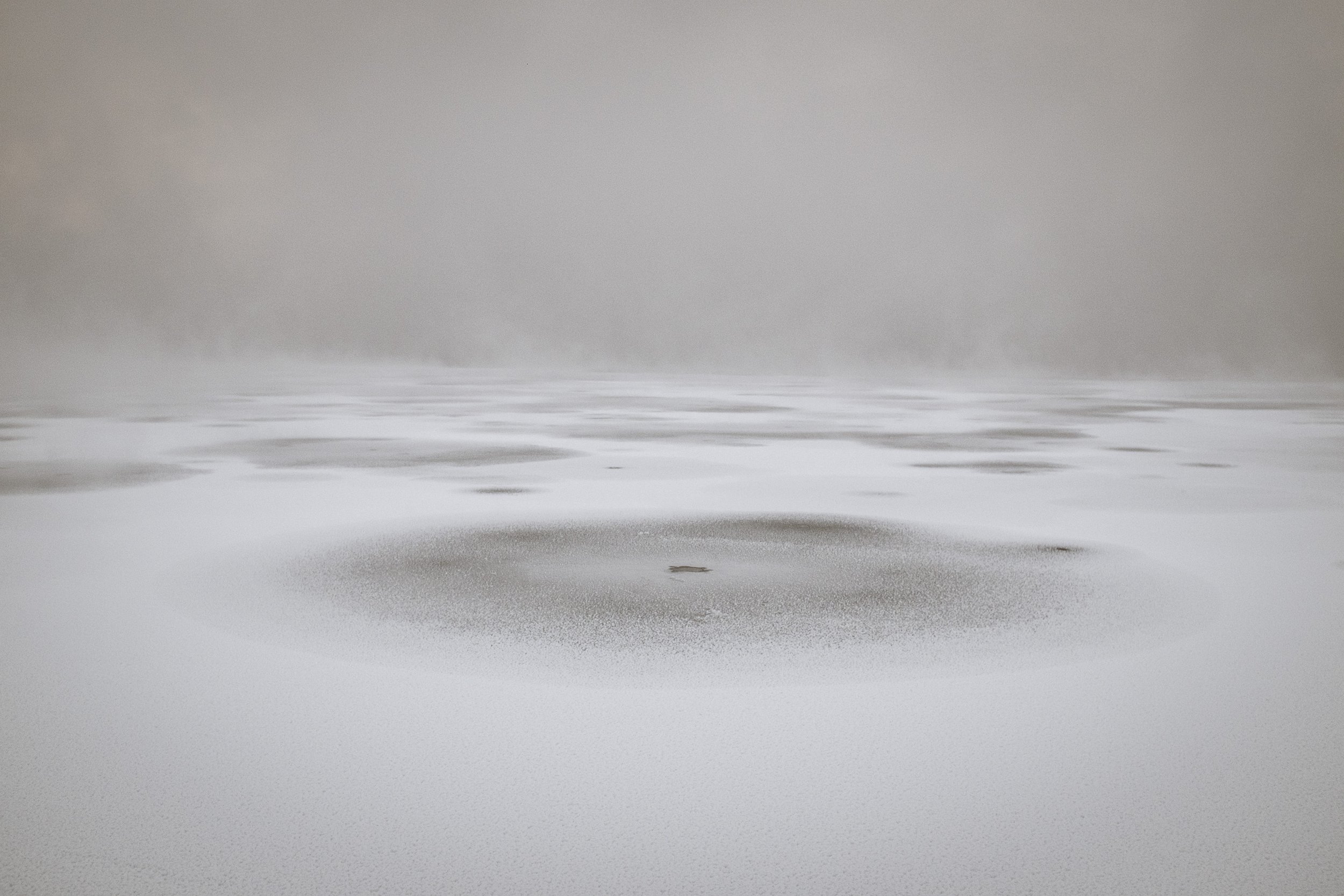

In The Second Fire (2020), Gabriela Bulisova and Mark Isaac allude to the growing levels of pollution and rapid climate change affecting Siberia's Lake Baikal, the world’s oldest, deepest, and most voluminous lake, containing one-fifth of the world’s fresh water. The title refers to an indigenous legend about the origins of Lake Baikal. According to this story, there was an enormous earthquake, fire came out of the Earth, and native people cried “Bai, Gal!” (“Fire, stop!”) in the Buryat language. The fire stopped, and water filled the crevice, creating the lake. Now, scientific studies demonstrate that the Baikal region experiences a rapid increase in temperature. The warming of Baikal represents a “Second Fire” that threatens the lake and the people who rely on it.
Still from the three-channel video Embers and Effluents (2020, 4:44), also focused on the environmental health of Lake Baikal, screened outside the gallery.
Prague, Czech Republic and Tala, Cyprus, by Gabriela Bulisova (from the series A Tree for the Forest)
Untitled 1-4 by Mark Isaac (from the series A Tree for the Forest)
A Tree for the Forest (2021-2022) focuses on the role of trees in the climate crisis. Acknowledging that many parts of the world are experiencing their worst wildfires in history, Bulisova develops a roll of film as one landscape of a charred forest. She burns the negatives to emphasize the devastating impact and scans and prints them as large-scale panoramas. The project also calls attention to the scientific discovery that trees communicate through a “wood wide web” of underground fungi networks. This stresses the importance of avoiding clear cutting and maintaining the diversity of wooded areas. Responding to these findings, Isaac makes panoramic photographs that allude to the “secret life of trees,” vibrating with energy, singing, dancing, and cavorting.
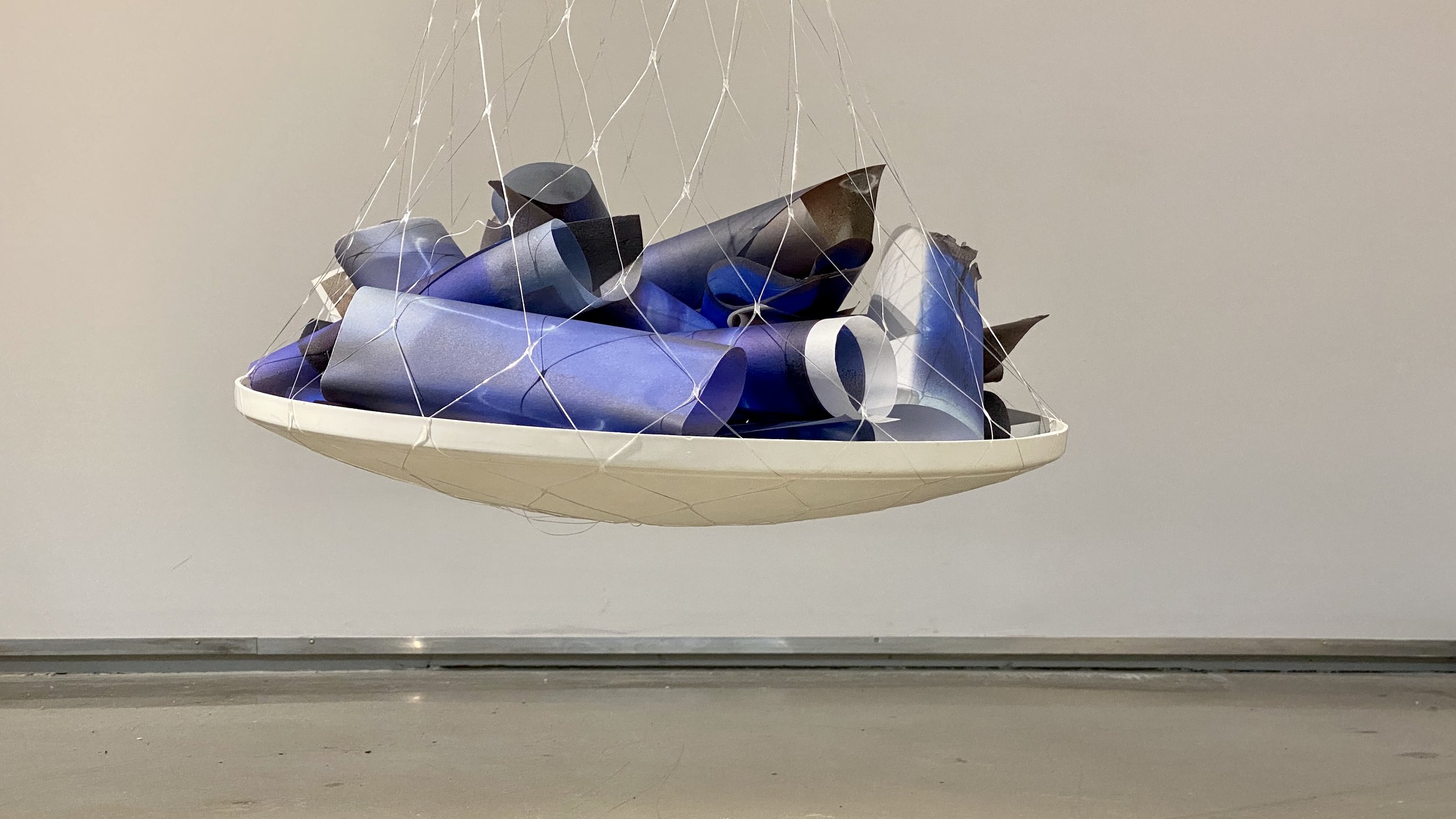
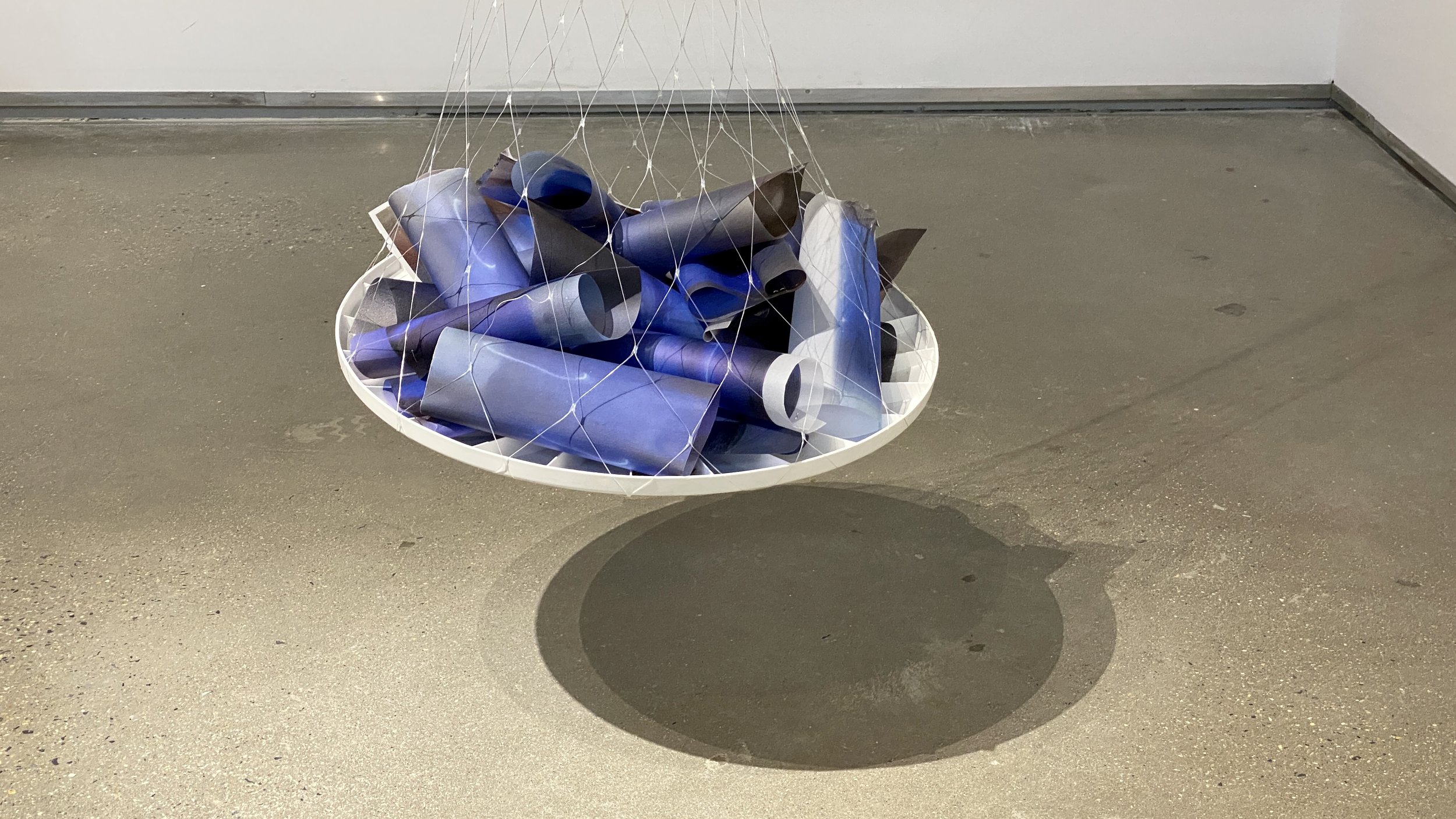
A convenient matter (2022) by Yam Chew Oh
Inkjet print on vellum, used Christmas tree netting, found plastic cap
Approx. 13’ x 20” x 20”
In A convenient matter (2022), Yam Chew Oh warns about the staggering impact of single-use plastic bottles on the environment and climate crisis, which stems from a culture of convenience. It has been estimated that about 1 million plastic bottles are purchased across the world every minute, and around 60 million end up in landfills every day. Americans send over 38 billion water bottles to landfills yearly, the equivalent of 1,500 plastic bottles every second. It takes an average of 450 years for a plastic bottle to completely decompose, and some can take up to 1,000 years to biodegrade. Oh reflects on the magnitude of this environmental challenge, which demands drastic and concerted action beyond one state or country. In the process of installation, he enacts the metaphorical offering of Taoist incense paper to the underworld, as if mourning the demise of Mother Earth.
Exhibition Catalog
RELATED EVENTS
The exhibitions included several related events designed to engage directly with the community and engender meaningful action. These included:
Making Climate Change Art: Atlantika Collective, September 10. On September 10, 2022, George Mason Exhibitions hosted an online discussion with seven Atlantika Collective artists focused on the exhibition titled Approaching Event Horizons. During the discussion, led by curator María Alejandra Sáenz and Don Russell of Mason Exhibitions, the artists discuss their motivations for focusing on the climate crisis, their strategies for tackling this difficult but timely topic, and what may come next for the Collective.
Intersectional Climate Justice: Calls to Action, September 24. The Collective, together with Mason Exhibitions Arlington and faculty of George Mason University, hosted a hybrid (in-person and virtual) discussion about social justice issues exacerbated by climate change, and how people can get involved to save humanity and all living things on the earth. The discussion included a rapid-fire learning session about climate change and related topics like displacement, food and water security, BIPOC justice, and mental health. George Mason University's Greenhouses and Gardens Program also sold campus-grown microgreens, vegetables, and house plants.
200 Trees: A Performance Action + Tree Planting, October 1st. Atlantika Collective artist Katie Kehoe presented a socially engaged artwork as a companion piece to a video installation she is presenting in the gallery. An introductory performance at Mason Exhibitions Arlington was followed by a participatory tree planting at the Fairfax campus of George Mason University. Participants helped restore native plant species in Virginia and increased green landscaping at the university. This effort was sponsored by GMU’s Office of Sustainability.
Thank You to George Mason Exhibitions
Atlantika Collective expresses its appreciation to George Mason Exhibitions, including Don Russell, Alissa Maru, Jeff Kenney, Annie Chen, Ben Ashworth, Liz Kartchner, Yassmin Salem, Doni Nolan, and Erich Miller for their invaluable assistance in creating this timely opportunity to address the climate crisis through visual art, performance, and discussion.



